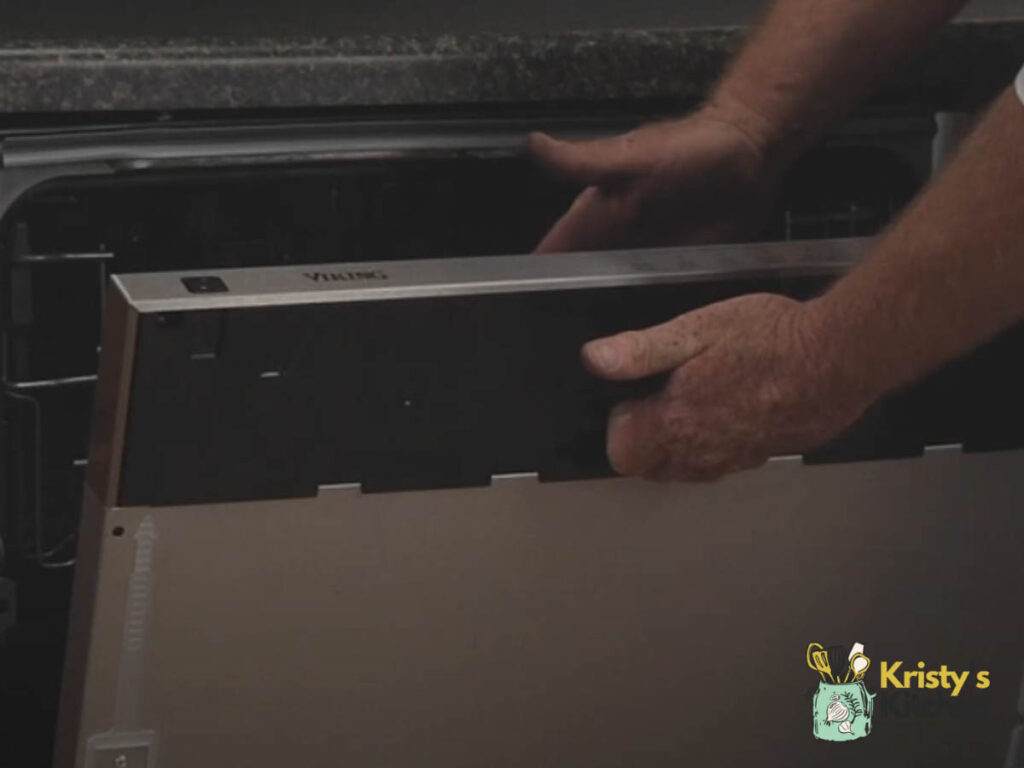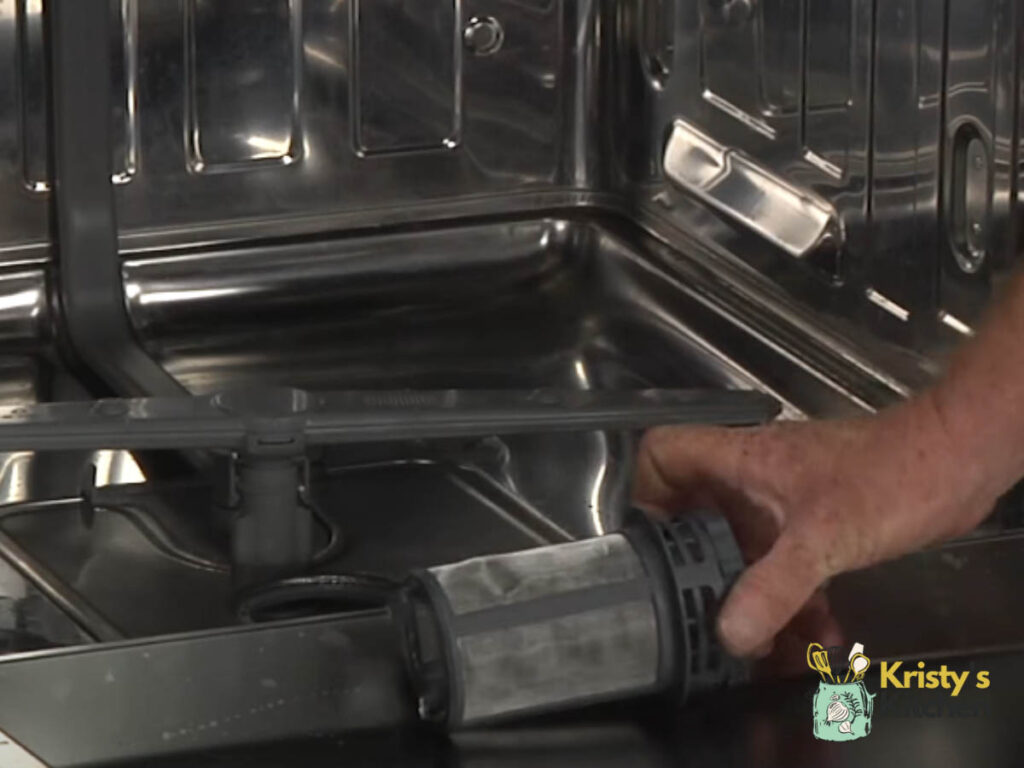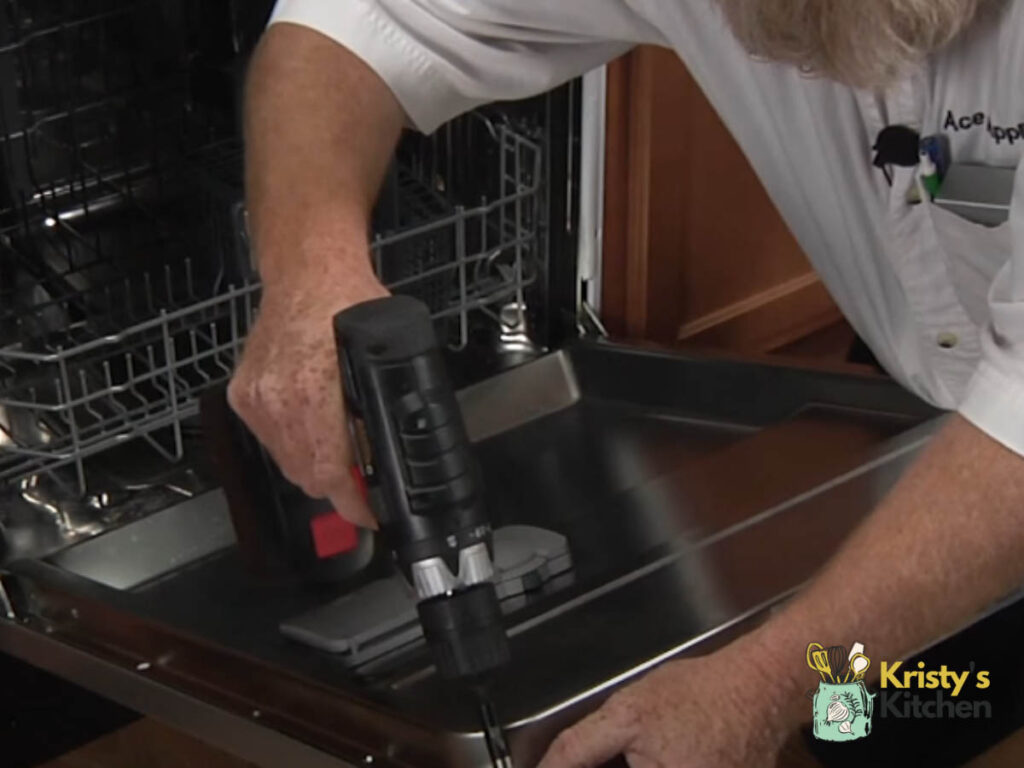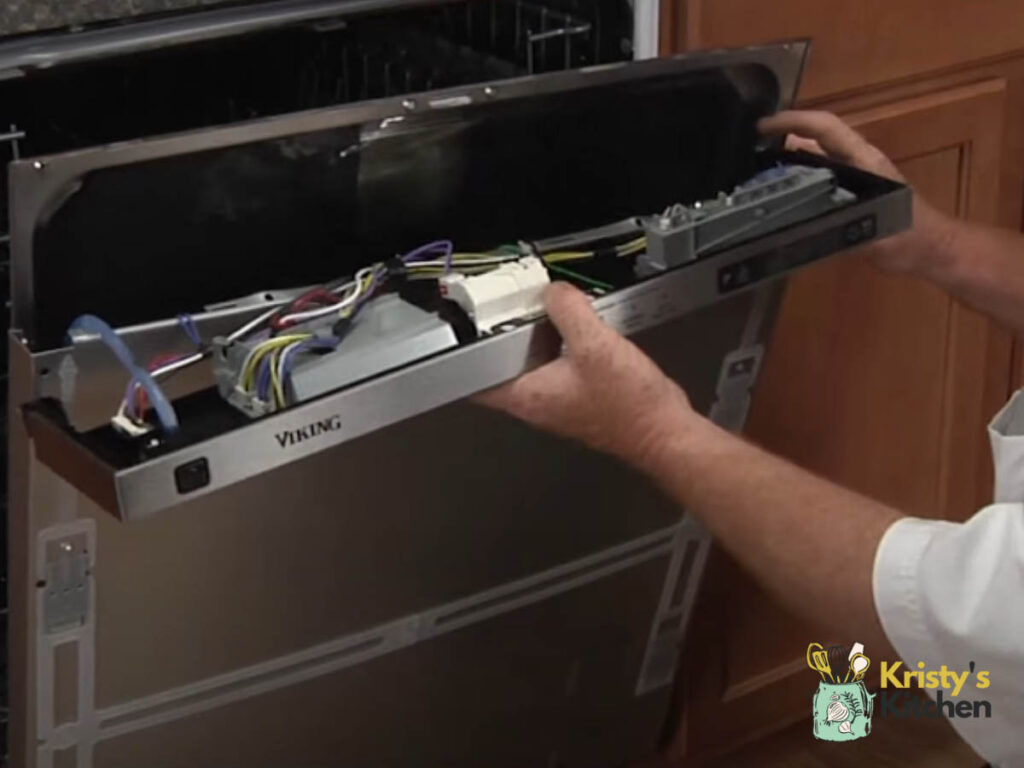Viking Dishwasher Not Starting? 7 Fixes To Try!
Ever had your Viking dishwasher give you a hard time when all you wanted was some clean dishes? Yeah, I’ve been there too.
Dishwashers have their moments and can be a bit finicky, but don’t worry – I’m here to help.
Let me give you a quick rundown of the whole thing.
Your Viking dishwasher might not start because of power issues, a wonky door or glitched control panel, something broken inside, or clogged filters. You can fix it by checking the power, ensuring the door’s shut properly, cleaning the buttons, rechecking the settings, ensuring water flows fine, looking for anything broken inside, and giving the filters a good clean.
Not sure how to do all these things? I’ll walk you through everything you need to do step by step.
Without further ado, let’s get started.
Why Is My Viking Dishwasher Not Starting?

Let’s dig deeper into why your Viking dishwasher might not be starting first.
By learning about these potential causes, you’ll be better prepared to troubleshoot and find a solution.
Power Supply Issue
One common reason why your Viking dishwasher might not be starting is due to a power supply problem.
If there are issues with the electrical connection, like a loose or unplugged power cord, your dishwasher won’t be getting the electricity it needs to begin working.
Problems with the circuit breaker or a blown fuse can also be culprits in preventing the dishwasher from starting up.
Door Issue
The dishwasher door is pretty important when it comes to getting things going.
If the door isn’t closed properly or if the latch is acting up, the dishwasher’s safety features might stop it from starting.
Another thing to watch out for is a faulty door gasket that could mess up the seal.
Even if the door seems closed, the dishwasher might think it’s open, causing it to refuse to start.
Control Panel Issue
Think of the control panel as the brain of your Viking dishwasher.
If there’s something wrong with it, like a button not working or a messed-up circuit, that can stop any cycle from kicking off.
Sometimes, the electronics can glitch, or the dishwasher might not be able to talk to its own insides, which can also keep it from starting.
Faulty Components
Inside your dishwasher, there are a bunch of parts that need to work smoothly together for it to start and run.
If any of these parts – like the motor, pump, or heating element – aren’t working as they should, it can mess up the starting process.
Your dishwasher’s sensors might notice these issues and put a stop to the cycle before it even begins, to avoid any potential damage.
Filter Obstructions

Dishwashers have filters to catch junk and keep the system clean.
But if these filters get dirty or clogged, they can mess with the water flow and stop the cycle from starting.
The sensors in your dishwasher might pick up on the reduced water flow and stop things right there to prevent leaks or incomplete cleaning.
Fixing A Viking Dishwasher That Won’t Start

Don’t worry, the issue isn’t as severe as you think. You can fix it with simple steps most of the time.
Let me go through all the things you can do.
Check Power Input
Before we delve into all the technical stuff, let’s make sure the basics are covered.
A simple power hiccup might be causing all the problems.
- If the power plug is loose, gently plug it in ensuring a snug fit.
- Locate the power switch usually near the control panel or on the front of the dishwasher.
- Toggle it on and off a few times to ensure it’s engaging properly.
- Locate the circuit breaker panel in your home.
- Look for the breaker labeled for the dishwasher or kitchen appliances.
- If the breaker is tripped (in the middle or off position), flip it to the fully on position.
- If the breaker trips repeatedly, there might be a larger electrical issue. Consider calling an electrician.
- If using a fuse, unscrew the blown fuse and replace it with a new one of the same amperage.
Address Door Issues
A stubborn door latch might be the culprit. Here’s how you can clear the door issues:
- Look for any items or debris blocking the path of the door when closing.
- Carefully inspect the rubber gasket that seals the door.
- Clean the gasket using a damp cloth to remove dirt, food particles, and residues.
- Close the door and ensure the latch clicks into place.
- If the latch seems loose or doesn’t engage properly, it might need adjustment or replacement.
Clean Up The Control Panel

Maybe there’s some gunk on your panel stopping it from working right.
Here’s a quick tutorial for cleaning:
- Mix a mild cleaning solution with water and dampen a soft cloth.
- Gently wipe the control panel’s buttons and surface to remove dirt and residue.
- Make sure all the buttons are working fine.
Review Control Panel Settings
Didn’t work? Let’s make sure your dishwasher’s settings aren’t causing the hiccup, either.
Here’s what to do:
- Refer to your dishwasher’s manual to understand error code meanings.
- Make sure you’re using the right cycle.
- Ensure that other settings, like temperature and drying options, are correctly adjusted.
- If the dishwasher has a “delay start” function, ensure it’s not set for a later time accidentally. Turn it off if you’re trying to start the cycle immediately.
- Try to reset your Viking Dishwasher with a soft or hard reset.
Verify Water Supply
The water supply is a pretty common reason for this particular issue.
You can make sure everything’s in order by going through the following steps:
- Locate the water supply valve under your sink or in the vicinity of the dishwasher.
- Turn the valve counterclockwise to ensure it’s fully open.
- If the valve has a mesh screen, remove it carefully and clean off any sediment or debris.
- Run water through the valve to ensure it flows freely.
- If the valve is severely clogged or damaged, replace it.
Check for Defective Parts
Something might be wrong with the internals of your dishwashers. Here’s how you can investigate and address faulty parts:
- Turn off the dishwasher’s power before accessing the control board.
- Look for burnt areas, loose wires, or any visible signs of damage.
- If you find burnt-out fuses on the control board, replace them.
- Use caution and refer to your dishwasher’s manual for fuse specifications.
- If you suspect the timer or control board is faulty, consider reaching out to a technician with expertise in dishwasher repair.
These are some of the parts that often break in Viking Dishwashers, but there are other ones too.
You can check out my other dishwasher problem guides to check those components.
There are too many details involved for me to go through them here.
Clear Filter and Obstructions
Filters and obstructions can trigger some protection features or just break some parts that are needed for the washer to start.
You need to do the following to fix this:
- Check your dishwasher’s manual to locate and remove the filter.
- Rinse the filter under running water to remove debris and particles.
- Gently rotate the wash arm to ensure it moves freely.
- Remove any food particles or debris that might be obstructing its movement.
Tips To Prevent Such Problems In Future

Dealing with a Viking dishwasher that won’t start can be a real pain. To dodge that headache down the road, here are some simple tips to help you out:
- Cleanliness Counts: Regularly clean your dishwasher, particularly the filter and the door seal. A clean dishwasher is less likely to face startup problems.
- Gentle Door Handling: Be gentle when closing the dishwasher door. Make sure the latch is secure to prevent issues that might keep it from starting.
- Do Power Checks: Keep an eye on the power cord’s condition and ensure a stable connection to prevent any power-related glitches that could hinder startup. Don’t use too many things with the outlet.
- Water Flow Matters: Monitor the water supply line for kinks and obstructions. A smooth water supply is vital for your dishwasher to kick off its cycle.
- Be Careful With The Control Panel: Handle the control panel with care. Avoid spills that could affect its functionality and lead to startup troubles.
- Stay Attentive: Listen for unusual sounds or observe any changes in your dishwasher’s behavior. Catching these early might prevent broken parts that might stop your washer from starting.
- Load Smart: Load dishes in a way that allows spray arms to move freely, avoiding any hindrance to startup-related components.
- Use Quality Detergent: Opt for high-quality dishwasher detergent and rinse aid to prevent residue buildup that might interfere with the startup process.
- Fix Problems Quickly: Address any irregularities promptly, such as leaks or unusual odors, to prevent them from messing with sensors and causing startup problems.
FAQs
Why is the start button flashing on my Viking dishwasher?
A flashing start button could indicate an issue with the door not being properly closed or latched, which prevents the dishwasher from starting.
How do I turn on my Viking dishwasher?
To start your Viking dishwasher, make sure the door is closed securely, select a cycle, and press the start button.
What should I do if my Viking dishwasher doesn’t respond to any button presses?
If your dishwasher isn’t responding to any button presses, check the power supply, ensure the door is closed properly, and verify that the control panel is not locked and is in working condition.
My Viking dishwasher starts but stops mid-cycle. What could be the issue?
Mid-cycle stops can be caused by various factors, such as a clogged filter, a malfunctioning component, or a water supply problem.
Final Thoughts
So, that’s the scoop on troubleshooting your Viking dishwasher.
Remember, every appliance has its quirks, and dishwashers are no exception. If yours is acting up, just take a breath and give these tips a shot.
And hey, the cool thing is, the know-how you’ve picked up here works not just for Viking, but even for other brands like Bosch Dishwashers.
So, happy dishwashing, and may your kitchen adventures be smooth as a rinse cycle!
